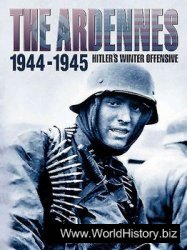Religious Traditions
As Pontiac prepared for war, he held out the hope that the British could be pushed back across the Alleghenies. To do so required a strong alliance of native peoples as well as support by the French. The number of soldiers confronting the Ottawas and their allies was not overwhelming. Dowd estimates that the number of British soldiers available to defend British interests in the region was roughly equivalent to the number available to Pontiac and his allies, somewhere in the vicinity of 3,500 men.4 The British had their forts to protect them, but many were garrisoned in small numbers. Even so, frontal attacks, Pontiac knew, would be highly costly, if not at times suicidal. Thus
Cleverness was essential—a quality that the British were consistently ready to condemn as duplicitous, at least in part because the British remained wedded to a military philosophy featuring attacks in formation that confronted the enemy head on. Such fighting was not conducive to frontier warfare, which Pontiac well knew.
Pontiac also could draw on his religious traditions in planning military tactics. This religion enshrined trickery within the behavior of Nanabush, whom the Ottawas considered the creator of the world. Nanabush combined a variety of qualities—some good, some bad—much like the humans whom he supposedly created. He was viewed as persuasive, crafty, and capable of considerable trickery, and thus fell within the broader native framework of the Trickster figure.
Pontiac was respected for his spirituality as well as for his political and military acumen. He may even have been a mide—that is, a type of highly regarded shaman or holy man. When Pontiac heard of the revitalization visions of Neolin, known as the Delaware Prophet, he recognized in his teachings an inspirational underpinning for efforts to defend the Ottawas’ homeland, drive back the intruders, and restore a world that seemed to be dissolving around them.
Neolin's Teachings
By at least 1761, Neolin was spreading his message of how he had learned in a dream that he was to travel to the Master of Life, the creator, and how he subsequently set out to do just that. A difficult journey led him finally to the Master, who instructed him in terms common to revitalization visions: rejection of Euro-American clothes, weapons, and other items; encouragement to drive the intruders out of native lands; and a variety of religious rituals that would protect the Indians and bring them victory. Regarding religion, Neolin’s teachings were decidedly nontraditional, as he would replace such fundamental practices as vision quests, medicine bundles, and dances with, instead, a single-minded devotion to the Master of Life and use of a prescribed, written prayer. Neolin’s narrative of seeking the Master of Life also included visions of heaven and hell and following of the straight and narrow path as opposed to the broad road, ideas clearly borrowed from Christian teaching.
Neolin’s story offered a strong religious framework for the political and military effort that Pontiac knew would be essential to achieve his goals. Consequently, he decided to make overt use of Neolin’s prophetic teachings as he prepared for war.
Preparations for War
In late 1762, Pontiac sent messengers with wampum belts and symbolic tomahawks in search of allies throughout the upper Midwest and down through Illinois. This effort was not intended to create one unified, centrally directed army, but rather to encourage local attacks on British installations throughout
From Pontiac's Speech, May 5, 1763
"It is important for us, my brothers, that we exterminate from our lands this nation which seeks only to destroy us. You see as well as I that we can no longer supply our needs, as we have done, from our brothers, the French. The English sell us goods twice as dear as the French do, and their goods do not last. Scarcely have we bought a blanket or something else to cover ourselves with before we must think of getting another; and when we wish to set out for our winter camps they do not want to give us any credit as our brothers, the French, do.
"When I go to see the English commander and say to him that some of our comrades are dead, instead of bewailing their death, as our French brothers do, he laughs at me and at you. If I ask anything for our sick, he refuses with the reply that he has no use for us. From all this you can well see that they are seeking our ruin. Therefore, my brothers, we must all swear their destruction and wait no longer. Nothing prevents us; they are few in numbers, and we can accomplish it. All the nations who are our brothers attack them—why should we not attack? Are we not men like them?"
Source: Translated by R. Clyde Ford from the French of the anonymous Journal of Pontiac's Conspiracy, in The Siege of Detroit in 1763, ed. Milo Milton Quaife (Chicago: R. R. Donnelley and Sons, 1958) 22.
The area between the Allegheny Mountains and the Mississippi River. Neither the Ottawas nor other native groups had single, autocratic leaders; decentralization and decision making by consensus were the norm. A leader such as Pontiac might plan, encourage, and motivate, but he could not expect to simply issue an order and receive total compliance—and Pontiac was far too perceptive to believe that he could.
The need for persuasion made Neolin’s teachings all the more important, and Pontiac incorporated them into his address to his local allies gathered at his own village about 10 miles southwest of Detroit. There, at two councils—on April 27 and May 5, 1763—he spoke to Ojibwas, Potawatomis, and Hurons. The first two, like the Ottawas, were Anishinabeg, Algonquian-speaking groups that were culturally close but politically distinct. The name “Ottawa” came from the word for trade—an appropriate sobriquet for a people historically known for their experience in trading and skill at diplomacy. These two closely linked qualities had helped make the Ottawas both experienced and effective at interacting with other peoples. If an individual were to arise who might be able to bring together groups that very much prized their separate independence, it made sense that he would come from the Ottawas.
Pontiac shared with his auditors the story related by Neolin but may have softened the prophet’s anti-French tone. The Master of Life, according to Neolin, not merely condoned the type of action that Pontiac urged on his listeners, but actually commanded it; at the same time the Master of Life reassured his
Followers that this goal could be achieved. Even so, clever tactics were also necessary, and the lessons of Nanabush offered a model of effective deception. The first step to taking Fort Detroit, which the British had inherited from the French after the capitulation of 1760, was to reconnoiter the interior of the fort.
The Plan to Capture Fort Detroit
On May 1, Pontiac persuaded Major Henry Gladwin, the fort’s commander, to allow a ceremonial dance. While most of the visitors performed the dance, others carefully took notice of the location of such facilities as barracks and powder magazines in preparation for a future effort to capture the fort. At the conclusion of the dance, Pontiac set up a council with Gladwin for May 7.
The plan might have worked if Gladwin had not received intelligence from an Indian informer about Pontiac’s true intent. Consequently, when Pontiac arrived on May 7 with approximately 300 Anishinabeg and Wyandots hiding weapons under their blankets, the British were ready. Pontiac had arranged a signal for attack: reversing a wampum belt to show its green rather than white side. However, 120 soldiers were arranged on the ramparts with weapons aimed at the visitors. Pontiac quickly realized that his men would have been slaughtered and left the white side of his wampum belt exposed.
Trying to make the best of a dangerous and embarrassing situation, Pontiac asked Gladwin why his men were in such a warlike posture. Gladwin made no effort to hide his knowledge of the plot, and Pontiac tried to persuade him that someone (“some bad bird”) had lied about Pontiac’s intentions.5 Although it was not uncommon for Indians to believe that they could communicate with animals, especially birds, it seems likely in this case that Pontiac was speaking figuratively rather than mystically, referring to actual human beings.
Why Gladwin allowed Pontiac to enter the fort in the first place and, after having allowed him in, did not arrest Pontiac remain unanswered questions. Certainly the action that he took was risky and permitted Pontiac to try again, which, of course, is what he did. Peckham suggests that Gladwin may have been trying to defuse the situation and prevent a war by demonstrating his own superior knowledge and sufficiently humiliating the Ottawa leader to undermine his credibility. He may also have feared that taking Pontiac prisoner would precipitate a full-scale attack on a fort that, although reasonably strong, was constructed of wood and could be set afire. Parkman conjectures that Gladwin may have feared being considered dishonorable if he had detained Pontiac before he had actually committed a violent act against the British, and that he may have perceived the plot to be a local, temporary concoction that would be dropped once the initial foray was repulsed.
Pontiac returned to Fort Detroit the following day bearing a sacred calumet, or peace pipe. Gladwin refused to see Pontiac, but Captain Donald Campbell, the former commander of the garrison who had a history of friendly interactions with the Ottawas, met with him. They agreed that a general council would occur the next day.




 World History
World History









